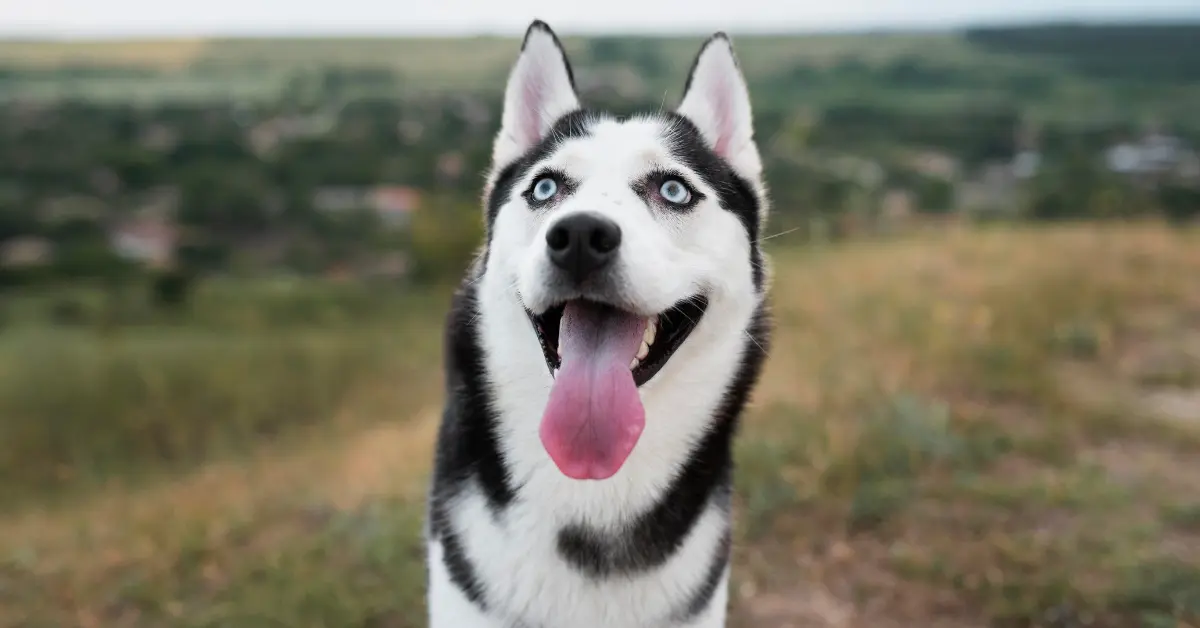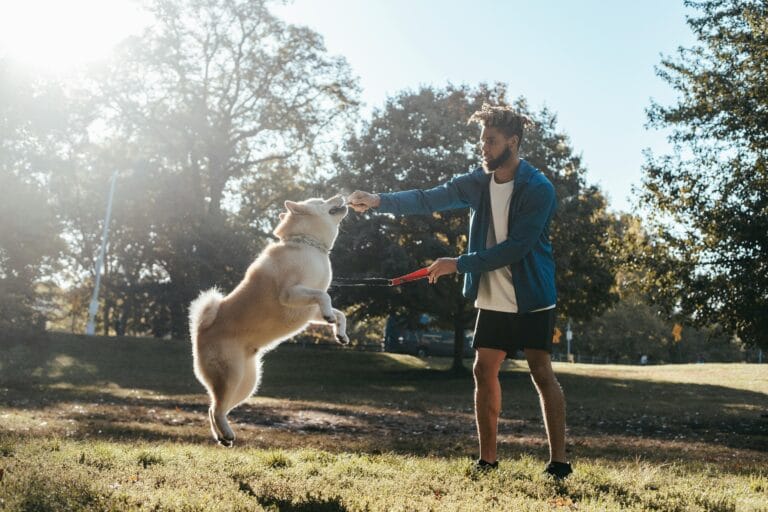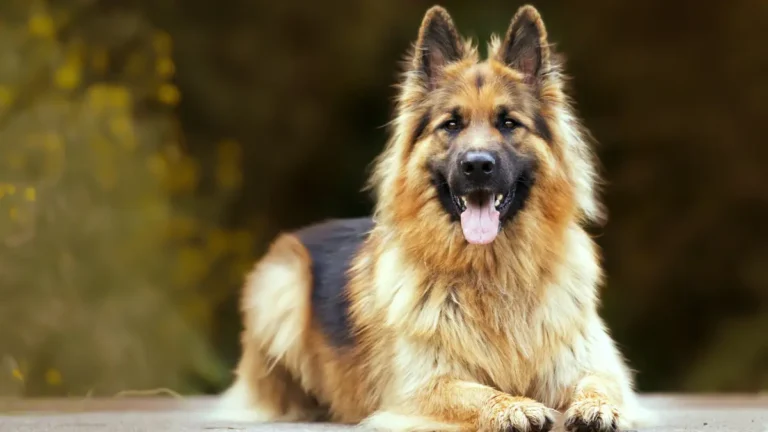Husky mixes are taking the canine world by storm. With their striking features, boundless energy, and loyal personalities, they combine the best traits of the Siberian Husky with other beloved breeds. But owning a Husky mix comes with challenges dog lovers need to understand. This guide dives deep into Husky mix breeds, covering their unique traits, care requirements, and what to watch out for. Whether you’re considering adopting or just curious, this comprehensive guide has you covered.
Table of Contents
I. Understanding Husky Mix Breeds
General Characteristics of Husky Mix Breeds
Husky mixes inherit a blend of characteristics from their Husky parent and the other breed in the mix. Common traits include intelligence, high energy, and an independent streak. They often exhibit the striking blue or multicolored eyes Huskies are known for, along with thick, double coats.
Common Traits Inherited From Huskies
- Loyalty: Husky mixes are deeply attached to their families.
- Playfulness: They thrive on physical activity and mental stimulation.
- Stubbornness: Training requires patience and consistency.
Health Considerations Across Husky Mixes
Husky mixes are generally robust but may inherit health issues from their parent breeds, such as hip dysplasia, eye conditions, or skin allergies.
Exercise and Training Requirements
These mixes need regular, vigorous exercise to stay happy and healthy. Without it, they may develop destructive behaviors. Positive reinforcement techniques work best for their sometimes strong-willed personalities.
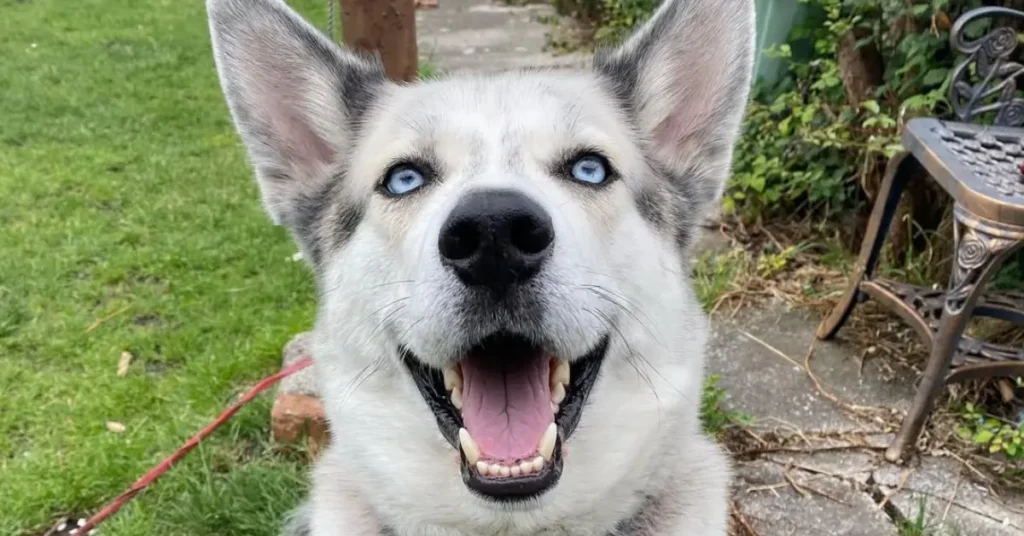
II. German Shepherd Husky Mix (Gerberian Shepsky)
Overview and Appearance
The Gerberian Shepsky combines the loyalty of a German Shepherd with the energetic nature of a Husky. They are medium to large dogs with a majestic appearance, often boasting a thick, wolf-like coat.
Size and Physical Characteristics
- Height: 20–25 inches
- Weight: 50–90 pounds
- Coat: Dense, with a mix of Husky and Shepherd coloring.
Temperament and Personality
This mix is intelligent, protective, and affectionate, making them excellent family dogs. However, they require early socialization to curb any overprotective tendencies.
Exercise and Training Requirements
Husky mixes need regular, vigorous exercise to stay happy and healthy. Engaging activities such as jogging, hiking, and agility courses provide excellent ways to burn off their energy. For a unique twist, try recreational sled-pulling or a game of fetch to keep them entertained. Without proper exercise, they may develop destructive behaviors. Remember, positive reinforcement techniques work best for their sometimes strong-willed personalities, helping to ensure a well-behaved and content companion.
These mixes need regular, vigorous exercise to stay happy and healthy. It’s not just about physical activity; mental stimulation is equally crucial. Engaging their minds with puzzle toys, scent games, and advanced obedience training can prevent boredom and undesirable behaviors. Positive reinforcement techniques work best for their sometimes strong-willed personalities.
Training Challenges and Tips
Training Husky mixes can be a rewarding experience when approached with the right techniques. Here are some effective methods to consider:
- Clicker Training: This positive reinforcement technique involves using a clicker device to signal the precise moment a desired behavior is performed, followed by a treat or praise. This method helps in building a strong association between the behavior and the reward, making it easier for your Husky mix to understand what is expected.
- Positive Reinforcement Schedules: Implement a varied reinforcement schedule to keep your dog engaged. Start with continuous reinforcement, rewarding every correct response, then gradually shift to partial reinforcement, where rewards are given intermittently. This approach can increase motivation and reinforce learning.
- Mental Stimulation through Obedience Training: Incorporate advanced obedience exercises and puzzle toys into your training regimen. Commands like “sit,” “stay,” “come,” and “leave it” are crucial but adding challenges like scent work or agility courses can provide mental stimulation, preventing boredom and destructive behaviors.
These techniques, combined with patience and consistency, are essential for effectively training your Husky mix, fostering a well-behaved and happy companion.
Health Concerns Specific to This Mix
Managing the health of a Gerberian Shepsky involves understanding potential risks and taking proactive measures. Here’s how you can keep your furry friend in top shape:
- Hip Dysplasia Prevention: Ensure your dog maintains a healthy weight through a balanced diet and regular exercise. Supplements like glucosamine and chondroitin can help support joint health.
- Eye Care: Regular veterinary check-ups are crucial for early detection of eye conditions. Antioxidant-rich foods or supplements can also support ocular health.
- Skin Health Maintenance: To manage or prevent skin allergies, feed a diet rich in Omega-3 and Omega-6 fatty acids, which can reduce inflammation and promote a healthy coat. Frequent grooming is also important to keep the skin and coat clean.
Incorporating these strategies can significantly reduce the risk of serious health issues and ensure your Gerberian Shepsky leads a healthy, happy life.
Grooming Needs
Regular brushing (2–3 times a week) is necessary to manage their shedding and keep their coat healthy.
Grooming Tools and Techniques for Husky Mixes
To manage a Husky mix’s dense coat, investing in the right grooming tools is crucial. Effective grooming starts with a slicker brush, which is perfect for gently detangling fur and removing dirt. It helps in maintaining the outer coat regularly.
For tackling the undercoat, an undercoat rake is indispensable. This tool reaches deep into the thick coat, effectively removing loose fur without harming the dog’s skin. Regular use can significantly reduce shedding and prevent mats.
Deshedding techniques are equally important. Incorporate a deshedding tool designed for double-coated breeds to minimize loose hair. Using these tools every few days will help manage the shed fur and keep your home cleaner.
Additionally, seasonal shedding periods, known as “blowouts,” require extra attention. During these times, more frequent brushing is necessary to handle the increased volume of loose fur. Always brush in the direction of the hair growth to ensure comfort and effectiveness.
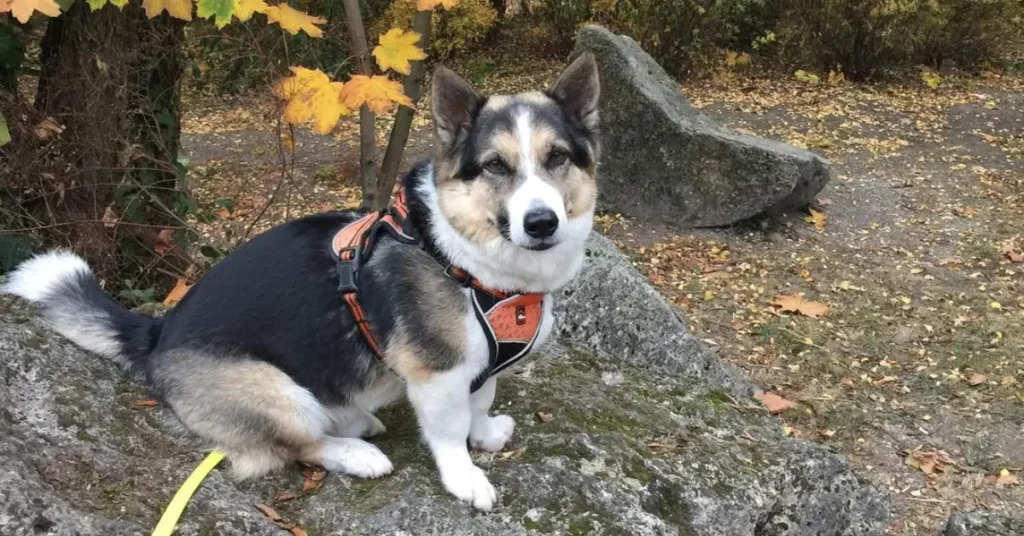
III. Corgi Husky Mix (Horgi)
Overview and Appearance
The Horgi combines the playful charm of a Corgi with the energetic drive of a Husky. This mix is smaller in size but full of personality.
Size and Physical Characteristics
- Height: 12–15 inches
- Weight: 20–50 pounds
- Coat: Medium-length and fluffy, often requiring frequent brushing.
Temperament and Personality
Horgis are friendly, affectionate, and sometimes mischievous. They are great companions for families or individuals with an active lifestyle.
Exercise Needs
Horgis need moderate exercise—around 60 minutes daily. A mix of walks and indoor play can meet their needs.
Training Approach
Their intelligence and playfulness make them quick learners, but they may have a stubborn streak. Positive reinforcement and patience are essential.
Health Considerations
- Back problems (due to their long body and short legs)
- Eye conditions
- Obesity, which can worsen back issues
Dietary Considerations for Husky Mix Health
To maintain optimal health, it’s crucial to provide a balanced diet tailored to the needs of Husky mixes. High-quality proteins are essential for muscle development and energy. Incorporating omega fatty acids in their diet can enhance skin and coat health, preventing dryness and reducing shedding. Additionally, supplements that support joint health, such as glucosamine and chondroitin, can mitigate the risk of hip dysplasia and other joint issues common in these breeds. By addressing dietary needs, owners can proactively manage their pet’s health and well-being.
Grooming Requirements
Weekly brushing is essential to control shedding and prevent matting.
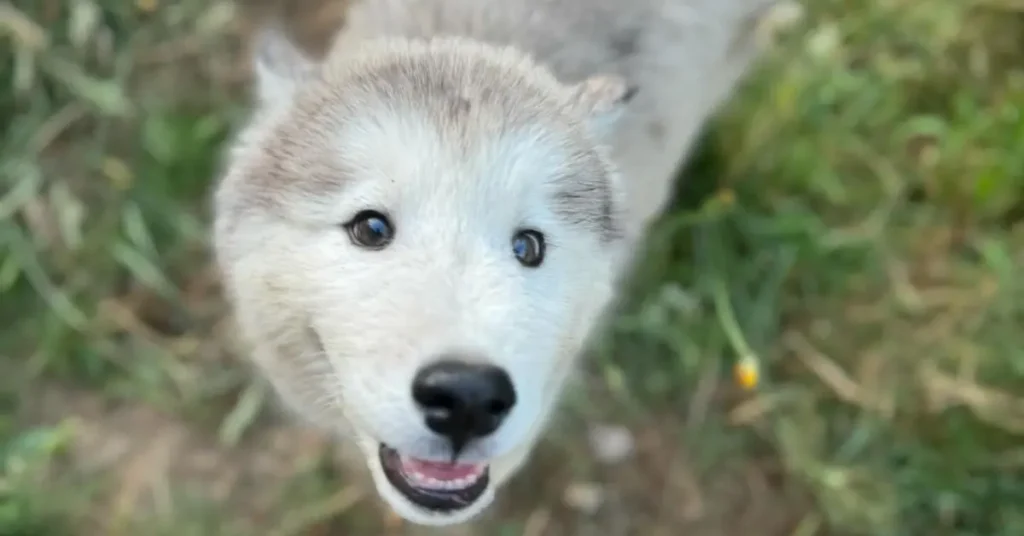
IV. Other Popular Husky Mixes
Labrador Husky Mix
- Known for their friendliness and energy.
- Great family pets with moderate grooming needs.
Golden Retriever Husky Mix
- Gentle, intelligent, and great with children.
- Requires regular exercise and grooming.
Pitbull Husky Mix
- Energetic and strong, needing experienced owners.
- Regular exercise and training are a must.
V. Living with a Husky Mix: Essential Tips
Exercise Requirements Comparison Table
| Husky Mix Breed | Daily Exercise Needs |
|---|---|
| German Shepherd Mix | 90+ minutes |
| Corgi Mix | 60 minutes |
| Labrador Mix | 60–90 minutes |
Grooming Needs Comparison
| Husky Mix Breed | Grooming Frequency |
|---|---|
| German Shepherd Mix | 2–3 times weekly |
| Corgi Mix | Weekly |
| Golden Retriever Mix | 2–3 times weekly |
Space Requirements
Husky mixes thrive in homes with yards but can adapt to apartments if exercised sufficiently.
Climate Considerations
Due to their thick coats, Husky mixes prefer cooler climates. Extra care is needed in hot weather to prevent overheating.

VI. Common Challenges of Husky Mixes
- High Energy Management: Without enough exercise, these dogs can become destructive.
- Grooming Demands: Their thick coats shed frequently, requiring regular maintenance.
- Training Difficulties: Stubbornness can be an issue without consistent training.
- Health Issues: Watch for inherited conditions like hip dysplasia or eye problems.
Strategies for Overcoming Common Challenges with Husky Mixes
High Energy Management Solutions
To prevent destructive behavior resulting from pent-up energy, Husky mixes benefit from structured exercise routines. Consider brisk walks, agility training, or interactive play sessions like fetch. Incorporating varied activities keeps them engaged mentally and physically.
Grooming Strategies
Managing a Husky mix’s thick coat requires a routine to handle shedding. Invest in a quality undercoat rake and de-shedding brush. Develop a maintenance schedule that includes brushing multiple times a week, especially during seasonal shedding, to keep their coat healthy and home fur-free.
Effective Training Techniques
Overcome training difficulties by establishing a consistent, positive reinforcement-based regimen. Short, frequent sessions are more effective than long, sporadic ones. Introduce commands gradually and reinforce good behaviors with treats and praise to combat their stubborn tendencies.
Proactive Health Maintenance
Mitigate potential health issues with regular veterinary check-ups to detect issues like hip dysplasia or eye problems early. Maintain a balanced diet and monitor their weight to prevent obesity-linked health concerns. Incorporate joint supplements as advised by your veterinarian to support skeletal health.
VII. Is a Husky Mix Right for You?
Lifestyle Compatibility Checklist
- Are you active and able to meet their exercise needs?
- Can you commit time to grooming and training?
- Do you live in a climate suitable for thick-coated dogs?
Experience Level Recommendations
First-time dog owners may find Husky mixes challenging. Experienced owners are better equipped to handle their energy and training needs.
Living Situation Considerations
Ideal for homes with space to run but adaptable with proper exercise in smaller environments.
Space Requirements
Husky mixes thrive in homes with yards but can adapt to apartments if exercised sufficiently. For those in smaller living spaces, scheduling multiple daily walks is essential to meet their exercise needs. Utilizing dog parks provides a safe environment for off-leash play and socialization, which is crucial for their mental and physical well-being. Additionally, incorporating indoor mental stimulation, such as puzzle toys or training sessions, can help keep these energetic dogs entertained and content. By integrating these activities, apartment dwellers can create a suitable environment for a Husky mix.
Time Commitment Expectations
Husky mixes require daily attention, exercise, and grooming.
VIII. Choosing Your Husky Mix
Questions to Ask Breeders
- What are the health histories of the parents?
- Have the puppies been socialized?
- Can I meet both parents?
Adoption vs. Buying
Adopting a Husky mix from a shelter is a compassionate choice. Buying from reputable breeders ensures better health and socialization.
Red Flags to Watch For
- Breeders unwilling to provide health certificates
- Poor living conditions for puppies
- Extremely low prices
- Breeders unwilling to provide health certificates
- Poor living conditions for puppies
- Extremely low prices
- Lack of proper licensing and accreditation
- Refusal to provide references from previous buyers
- Selling puppies without proper vaccinations and health checks
Cost Considerations
Expect to spend $500–$1500 for a Husky mix from a reputable breeder.
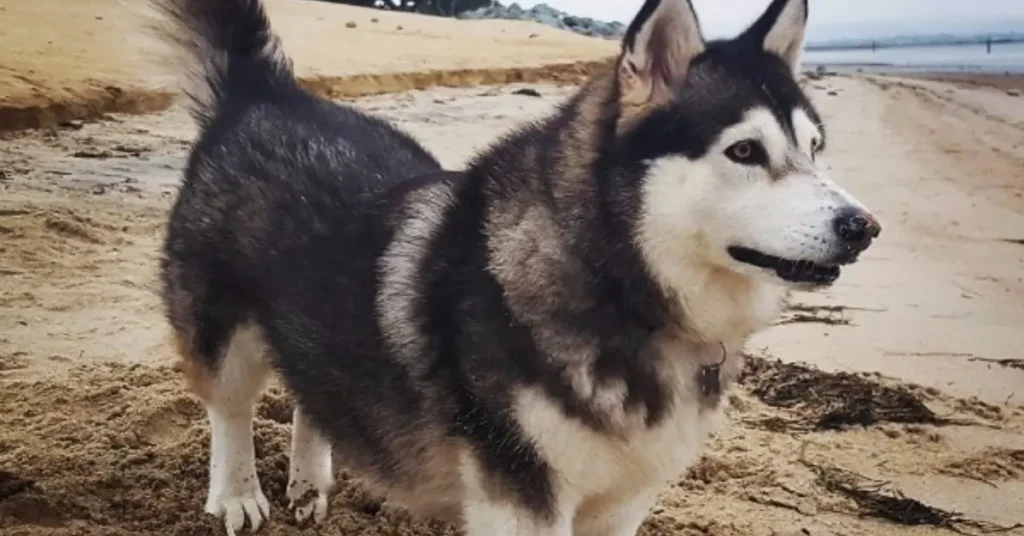
IX. FAQs About Husky Mixes
- Are Husky mixes good with kids?
Yes, with proper training and socialization, they are great family dogs. - How much exercise does a Husky mix need?
Depending on the mix, 60–90 minutes daily. - Do Husky mixes shed a lot?
Yes, they are heavy shedders and need regular grooming. - What health issues should I watch for?
Hip dysplasia, eye problems, and skin allergies are common concerns. - Are Husky mixes good with kids?
Yes, with proper training and socialization, they are great family dogs. - How much exercise does a Husky mix need?
Depending on the mix, 60–90 minutes of physical activity daily. - Do Husky mixes shed a lot?
Yes, they are heavy shedders and need regular grooming. - What health issues should I watch for?
Hip dysplasia, eye problems, and skin allergies are common concerns. - Are Husky mixes vocal?
Husky mixes are generally quite vocal, often howling or “talking” to communicate. - Do Husky mixes get along with other pets?
With proper introduction and socialization, they can coexist well with other pets, though individual temperaments can vary. - How do they handle being left alone?
They prefer company and can suffer from separation anxiety if left alone for extended periods, which may result in destructive behavior if not addressed.
Conclusion
Husky mixes offer the perfect blend of beauty, intelligence, and loyalty. While they require time and effort, the reward is a devoted companion. By understanding their needs and challenges, you can ensure a happy and fulfilling life for your Husky mix.
For more insights on raising a well-adjusted puppy, check out our articles on the Australian Shepherd puppy essentials, Border Collie puppy care, and raising happy Golden Retriever puppies. These resources provide valuable tips to help you succeed in raising a joyful and healthy puppy.

